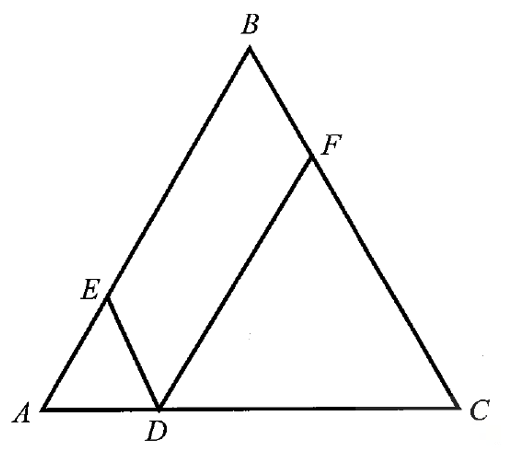USING A SPREADSHEET TO FIND MAD
Spreadsheets can be used to find the mean absolute deviation of a data set.
Example :
A paper mill is testing two paper-cutting machines. Both are set to produce pieces of paper with a width of 8.5 inches. The actual widths of 8 pieces of paper cut by each machine are shown.
Widths of Pieces of Paper Cut by Machine A (in.) :
8.502, 8.508, 8.499, 8.501, 8.492, 8.511, 8.505, 8.491
Widths of Pieces of Paper Cut by Machine B (in.) :
8.503, 8.501, 8.498, 8.499, 8.498, 8.504, 8.496, 8.502
Use a spreadsheet to determine which machine has less variability and, thus, does a better job.
Solution :
Step 1 :
Enter the data values for Machine A into row 1 of a spreadsheet, using cells A to H.

Step 2 :
Enter “mean = “ into cell A2 and the formula = AVERAGE(A1:H1) into cell B2.

Step 3 :
Enter “MAD = “ into cell A3 and the formula = AVEDEV(A1:H1) into cell B3.

The MAD for Machine A is about 0.0054 in.
Step 4 :
Repeat Steps 1–3 with the data values for Machine B.

The MAD for Machine B is about 0.0024 in.
Machine B has less variability, so it does a better job.
Finding MAD without spreadsheet
Problem :
The data represent the height, in feet, of various buildings. Find the mean absolute deviation.
60, 58, 54, 56, 63, 65, 62, 59, 56, 57
Solution :
Let x = 60, 58, 54, 56, 63, 65, 62, 59, 56, 57
The mean is given by
x̄̄ = (60+58+54+56+63+65+62+59+56+57) / 10
x̄ = 590 / 10
x̄̄ = 59
Absolute deviations of observations from mean :
|60 - 59 | = |1| = 1
|58 - 59 | = |-1| = 1
|54 - 59 | = |-5| = 5
|56 - 59 | = |-3| = 3
|63 - 59 | = |4| = 4
|65 - 59 | = |6| = 6
|62 - 59 | = |3| = 3
|59 - 59 | = |0| = 0
|56 - 59 | = |-3| = 3
|57 - 59 | = |-2| = 2
Calculate the MAD by finding the mean of the above absolute deviations of observations from mean. Round to the nearest whole number.
MAD = (1 + 1 + 5 + 3 + 4 + 6 + 3 + 0 + 3 + 2) / 10
MAD = 28 / 10
MAD = 2.8 ≈ 3
Kindly mail your feedback to v4formath@gmail.com
We always appreciate your feedback.
©All rights reserved. onlinemath4all.com
Recent Articles
-
Digital SAT Math Problems and Solutions (Part - 148)
Apr 22, 25 08:20 AM
Digital SAT Math Problems and Solutions (Part - 148) -
Eliminating the Parameter in Parametric Equations
Apr 21, 25 10:37 PM
Eliminating the Parameter in Parametric Equations -
Quadratic Equation Problems with Solutions (Part - 3)
Apr 21, 25 02:37 AM
Quadratic Equation Problems with Solutions (Part - 3)
